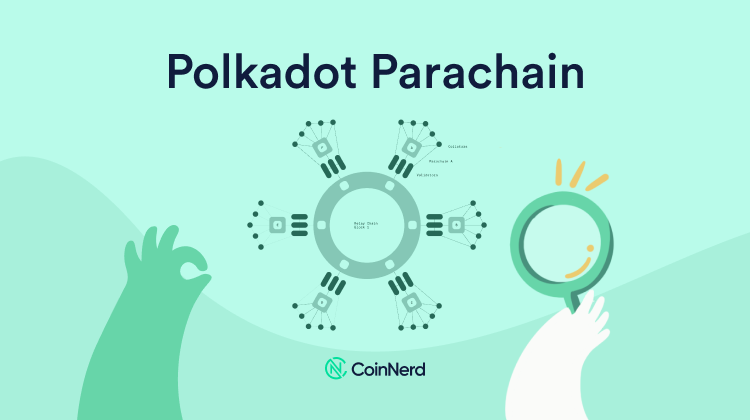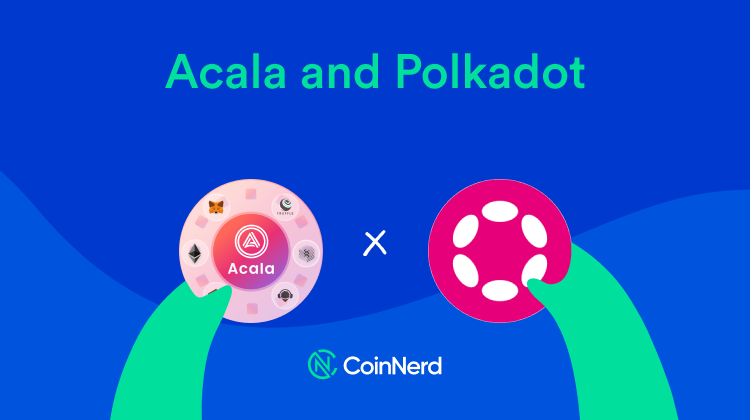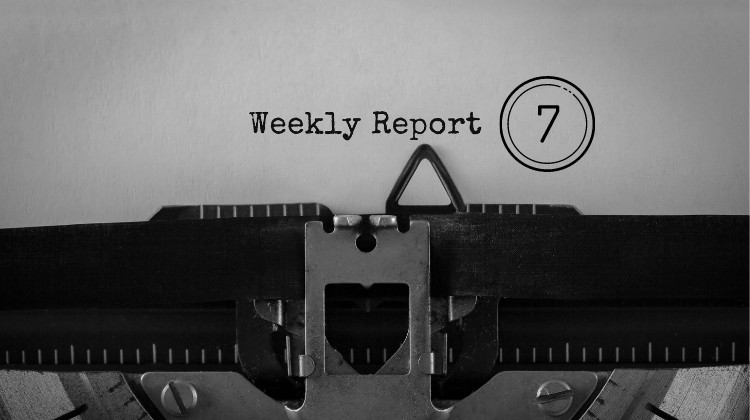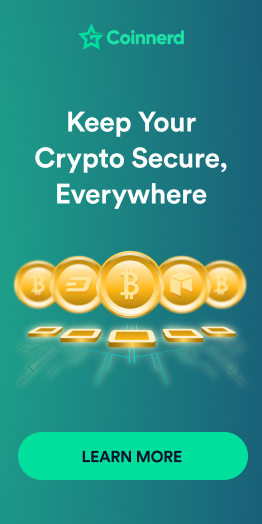What Is The Polkadot Blockchain? Is it Worth Investing In?
There has been a lot of hype surrounding the Polkadot blockchain for quite a while now. Both investors and developers are raving about its potential and growth. But is it true? Well, this article will answer that for you as we start from square one and explain what this blockchain is all about.
What is Polkadot?
Polkadot is a blockchain network that is decentralized, scalable, and secure, and it allows for the exchange of any type of data between any type of blockchain network.
Additionally, the blockchain network allows the transmission of non-fungible data between blockchains, rather than just tokens. As a true multi-chain application environment, Polkadot allows for the construction of cross-chain registries and computations.
Smart contracts and decentralized apps are among the goals of Polkadato and intend to be the premier platform for such applications in the future.
One of the main selling points of Polkadot is its ability to move data between public, open, and permissioned blockchains as well as private ones. This enables developers to create applications that access permissioned data from a private blockchain and make it available on a public blockchain.
Why It Has a Huge Potential
Polkadot’s cross-chain interoperability allows the transmission of any type of data or asset between parachains, heralding the beginning of a new era of interchain services, communities, and economies. Polkadot’s multichain architecture makes it possible for it to serve as the cornerstone for a new decentralized internet, often known as the “Web3.”
When it comes to Polkadot’s future, scalability is achieved through the parachain architecture in a more decentralized and trustless manner than it is through traditional layer-2 scaling techniques.
Transactions are dispersed throughout the network, taking place concurrently on many blockchains. These transactions are all secured by a single set of decentralized validators to ensure their integrity.
Polkadot Parachains

Parachains are blockchains that are dedicated to certain initiatives and are connected to the Polkadot network. Many different types of parachains may be customized for a variety of different use cases.
However, one thing to note is that all of them belong to the principal blockchain called the “Relay Chain”. The Relay chain is commonly considered the nerve center of the Polkadot network.
Because the Relay Chain is in charge of the network’s shared security, consensus, and transaction settlement, all parachains that are linked into it benefit from the Relay Chain’s base features.
Parachains bring a lot to the table namely:
Interoperability
The ability of various blockchains to communicate with one another is a critical component of the parachain paradigm. “Cross-chain compatibility,” also known as “interoperability,” refers to the ability of blockchains to work together rather than on their own. Originally, only isolated networks with their communities existed. Parachains break this trend by establishing a decentralized, connected network of blockchains.
Flexibility
Polkadot enables parachain designers to be as flexible as possible while building their projects using the technology.
The requirements for creating a parachain in the Polkadot environment aren’t strict. One requirement is that they must demonstrate that each block in the parachain adheres to the set of rules that have been agreed upon by all participants in the parachain.
With this kind of flexibility, a lot of developers are motivated to create their ideal parachains and give back to the community. This in turn makes the community more to work with making it more scalable. And speaking of scalability, that’s also one of the benefits of parachains.
Scalability
Polkadot’s parachain method allows blockchains to achieve scalability at the layer-1 level rather than the layer-2 level. This way developers will not be forced to employ layer-2 solutions in this manner. This is a more decentralized and efficient method of increasing the size of the blockchain.
Through the use of parachains, many transactions can be spread out and processed at the same time across a network of layer-1 blockchains. Throughput and scalability are considerably improved as a result of this.
Independent Governance
Parachains on Polkadot can employ any governance model they wish, and they can use a variety of pre-built modules to set up a variety of on-chain governance systems in a matter of minutes.
The ability to employ advanced on-chain governance tools can assist teams in considerably reducing the possibility of hard forks of their chain.
People who are interested in blockchain technology frequently want to see how choices are made before they get involved, which is why on-chain governance is beneficial for parachain communities.
When parachains make use of Polkadot’s forkless upgrades feature, a solid governance mechanism helps them stay on top while also encouraging community cohesion and ensuring that everyone has a role in the network’s long-term success.
Crowdloans and Parachain Auctions
Another way that parachains help improve Polkadot’s scalability is through parachain auctions. A parachain auction allows parachains to connect to the PolkadotRelay Chains through an open, permissionless auction, allowing them to communicate with one another.
To distribute parachain slots among projects that are interested in running on either network, auctions are held periodically.
The ultimate goal is to have up to 100 parallel parachains running at the same time. These, on the other hand, will be opened in stages, with 20-30 parachains expected to be operational during the first year of operation.
They’ve decided to limit the number of parachain slots available to encourage competition and the most efficient utilization of fixed Relay Chain resources.
To be successful, prospective parachains must outbid one another to secure a lease, both during the original launch and upon lease renewal. For example, on Kusama, rentals are limited to 48 weeks, but Polkadot leases are limited to a maximum of 96 weeks.
This level of competition and scarcity helps to ensure that only the most viable parachains occupy each slot. Only successful parachains with traction, active usage, and a viable token economic plan can retain a slot, while abandoned or unsuccessful parachains cede their lease to more promising contenders.
How Crowloans Fit into Parachain Auctions
Crowdloans are the most recent innovation in the cryptocurrency industry. They allow people all over the world to contribute to the establishment of businesses while receiving cryptocurrency rewards.
What makes crowdloans so appealing is that they allow supporters to co-own leading blockchain networks before their launch. Crowdloans allow new businesses to compete in parachain auctions by enlisting the help of their communities in raising the necessary tokens.
When the Crowdloan event begins, participants simply deposit their DOT into the Crowdloan vault. This is a “smart contract,” which is a blockchain-based virtual vault ordered by computer code to secure the loaned DOT for two years.
Is this Cryptocurrency Project Worth Your Money?
According to some people, Polkadot is a logical next step for the cryptocurrency industry. It is the next step in improving the functionality of blockchain technology. It is an easy-to-use method of running a firm that has a lot of potential for expansion.
When a company expands in size, it becomes more valuable from the perspective of investors and this is certainly the case with Polkadot. The project has piqued the curiosity of investors because it is more engaging.
Developers can use the Polkadot system to link to other blockchains and even create their blockchains. When they see developers who are enthusiastic about new technologies, investors take notice.
It Brings Something New to The Crypto Market
Polkadot is a cryptocurrency that differs significantly from other cryptocurrencies. The project introduces a new technology known as the parachains. With parachains, you may create your chains in the network which helps to decentralize the blockchain even further.
Notable Coins of The PolkaDot Ecosystem
Acala

The Acala Network is a decentralized finance network that was created exclusively for the Polkadot ecosystem. It is meant to be used for a wide range of financial applications that use smart contracts, cross-chain interoperability, and strict security procedures.
Acala is also Ethereum compatible, which implies that its applications can be used on both Polkadot and Ethereum networks at the same time.
Acala makes use of two separate protocols, Honzon and Homa, to accomplish its goals. These serve as the building blocks for other applications in the decentralized finance and liquidity provision space, as well as for other industries.
Honzon Protocol
The USD stablecoin, which is built on Acala, can be backed by a variety of assets, including bitcoin and DOT, on Polkadot’s stablecoin platform, which uses the Honzon protocol.
Following the issuance of an aUSD (Acala’s stablecoin), it can be sold or leased to generate interest. AUSD allows for cross-chain transactions and thus is well-suited for its position as a stablecoin in the Polkadot ecosystem, where it is now in use.
Homa Protocol
The Homa Protocol is designed to produce liquidity from assets that are locked to the Acala Network. To earn interest, traditional yield farming permits the usage of any locked assets that are available.
With the help of the Homa Protocol, customers can participate in Yield Farming and leverage their locked assets to gain additional benefits and diversify their investments. Locked assets will be unlocked using an L-token, which will be used to reclaim them.
Those who desire to stake their DOTs will benefit from the liquidity provided by the Homa protocol. In exchange for adopting the Homa protocol, holders of DOT will receive L-DOT tokens, which are both fungible and liquid yield carrying tokens, which are fungible and liquid yield carrying tokens.
When used as collateral with Honzon Protocol, L-DOTs allow customers to acquire a loan while continuing to receive benefits from the underlying staked-DOT they have purchased with their money.
Notable Acala Events
Acala has a lot going for it and here are some notable mentions that we would like to include:
Full Ethereum-Compatibility
Using the custom-built Acala EVM+, the Acala engineering team has configured the platform to now provide an Ethereum-like development environment as well as a fully Ethereum-compatible experience for DeFi users while maintaining the full power, speed, and customizability of Polkadot’s modular blockchain framework.
Cross-chain Compatibility With Manta
Acala tweeted that they have cross-chain compatibility with Manta, another project in the Polkadot ecosystem. The success demonstrates the ability of Acala and Manta Network to privatize parachain assets within the Polkadot ecosystem, as well as the composability of the Polkadot ecosystem.
Raised Over $61M
Acala has finished the “Build Acala: Prepare the Treasury” event, which raised over $61 million from over 26,000 community members worldwide. Following the launch of Acala on Polkadot, the Acala Foundation will donate $61 million to the on-chain Acala Treasury, Acala’s Protocol DAO.
These funds, which will be held in Polkadot’s DOT token, will be used to self-fund future parachain slots on Polkadot, assist in the bootstrapping of new DApps and protocols built on the platform.
Acala’s Partnership With Current
Current announced on their website that they partnered with Acala. For those who don’t know.
To paraphrase their announcement:
A new category of hybrid finance (HyFi) is established as a result of groundbreaking cooperation, which combines traditional financial apps with decentralized financial applications.
Current will host its infrastructure and will become a member of the Polkadot network’s active validator set to guarantee complete trust in these products to the public.
To facilitate the transition from closed-loop fiat systems to open platforms, the Acala interface is integrated directly into Current Core, Current’s proprietary core banking platform. This will expedite the development of HyFi infrastructure that is suited to the needs of Current’s nearly three million subscribers.
Acala Tokenomics
Acala Native Token (ACA)
ACA is a utility token that is utilized throughout the Acala platform as a means of transactional payment. In the Acala ecosystem, ACA is used to pay for transaction fees and applications that are developed on top of smart contracts and that operate across the entire ecosystem. Aside from that, the ACA token is utilized for staking and other important network tasks.
ACA can also be used for network governance, which is another use. Holders of the ACA token will have the ability to vote in future elections. In this way, Acala Treasury token holders can express their opinions on issues such as the governance of the company, the election of council members, risk management, and network enhancements.
Details of the Parachain Token Auction
Source: https://acala.network/acala/token
Moonbeam
Moonbeam is a parachain based on the Polkadot protocol that offers smart contracts that are interoperable with the Ethereum blockchain. Aside from that, Moonbeam runs ChainBridge by ChainSafe, which allows bidirectional connectivity between the Ethereum blockchain and the Polkadot ecosystem.
Because of Moonbeam’s compatibility with Ethereum, developers can quickly port existing smart contracts and DApps to the platform without much hassle.
What Moonbeam Brings to the Table
Compatibility With Ethereum
Moonbeam enables Ethereum developers to utilize their favorite Ethereum development tools, such as Remix, Metamask, and Waffle.
With this, developers will be able to design new decentralized applications on Moonbeam and Polkadot, as well as redeploy existing Solidity applications with little modifications.
Reach a Larger Market
Compared to the other Polkadot parachains, Moonbeam allows your ethereum-based product to reach customers outside of the ethereum ecosystem. Because of this customers may be able to take advantage of low-cost gas rates and expand their horizons.
The First Full Operational Parachain on Polkadot
Moonbeam is the very first parachain that is fully operational in the Polkadot ecosystem. Moonbeam first started its launch process on December 17, 2021, making it the very first of its kind on Polkadot.
Currently, Moonbeam has at least 48 collators, is compatible with Ethereum, and allows users to stake their assets and acquire tokens on the network. The network is also compatible with other cryptocurrencies.
Individuals who made contributions to the Moonbeam parachain auction crowdloan will now be able to get their Moonbeam governance tokens in the near future.
Moonbeam Tokenomics
Source: https://moonbeam.foundation/glimmer-token/
(1) Starting with the network’s launch, a 3-month lock and equal vesting in 3- to 24-month periods.
(2) As of the network launch, a two-month lock and equal vesting in 2–12 months of a 12-month vesting schedule.
(3) the lockout period is 40 days from the event
(4) 30% of tokens were distributed when transfer and EVM were allowed, and the remaining 70% vest linearly on a block-by-block basis throughout 96 weeks of the lease
(5) Tokens that will be used by the Moonbeam Foundation to develop protocols and conduct other operations.
(6) Tokens for liquidity schemes designed to promote Moonbeam’s growth and adoption. This allocation will contribute to the Moonbeam’s and ecosystem’s acceleration of activity.
(7) PureStake’s founders and employees. It is expected that the network will be operational for four years, with a one-year “cliff” period and monthly vesting after that.
GLMR Token
As a completely decentralized smart contract-enabled platform, Moonbeam operates the network through the use of its native Glimmer token (GLMR). Moonbeam needs the Glimmer token to function. This token is critical to Moonbeam’s design and cannot be removed without jeopardizing critical functionality.
Glimmer can be used for a variety of purposes, including paying for network transaction fees, supporting gas metering for smart contract execution, providing infrastructure for the platform to function on, and facilitating on-chain governance processes.
Conclusion
Hopefully, you have a better understanding now of what the Polkadot blockchain is as well as some of the notable projects built upon it. With this information, you can make a more informed decision on whether or not this project is your cup of tea and whether or not you believe it’s worth investing with your hard-earned money.
* We hope this information will help you in your investment process, but this is not investment advice. Every investment carries risk, especially in this industry, so DYOR before making a decision.






